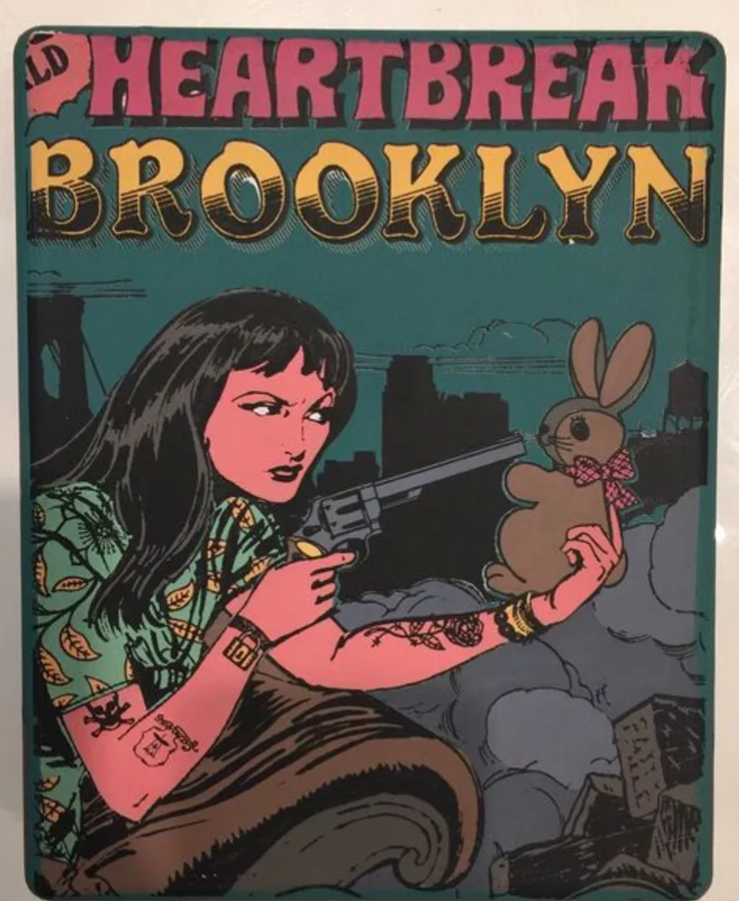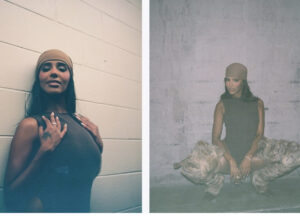In 2012, the art collective Faile, composed of Brooklyn-based duo Patrick McNeil and Patrick Miller, unveiled Heartbreak in Brooklyn, an arresting and multilayered piece that captured the raw emotion and gritty essence of its namesake borough. Known for their dynamic approach to urban art, Faile’s work blends pop culture references, graphic design, and fine art, creating immersive experiences that resonate with city dwellers and art enthusiasts alike. Heartbreak in Brooklyn epitomizes the duo’s talent for merging nostalgia, street culture, and deeply human themes into a cohesive artistic statement.
The Setting: Brooklyn as a Canvas
By 2012, Brooklyn had cemented itself as a global epicenter for art, creativity, and cultural reinvention. Once associated with working-class communities and industrial landscapes, the borough had undergone rapid gentrification, transforming it into a hub for artists and creatives. Yet, beneath the façade of artisanal cafes and curated galleries, Brooklyn remained a space rife with contradictions—economic disparity, fractured communities, and a lingering sense of loss amid progress.
Faile’s Heartbreak in Brooklyn channels this tension, exploring themes of love, longing, and disconnection. By using the city as both inspiration and canvas, the piece speaks to the universal emotions that transcend socioeconomic divides while grounding itself firmly in the urban experience. The streets of Brooklyn, adorned with their layered wheatpaste posters and murals, became an extension of Faile’s studio, blurring the boundaries between fine art and public expression.
The Visual Language of Heartbreak in Brooklyn
At first glance, Heartbreak in Brooklyn embodies Faile’s signature aesthetic: a chaotic yet deliberate layering of images, text, and textures. The piece combines comic book-style illustrations, bold typography, and fragmented imagery to evoke a sense of nostalgia and cultural memory. Central to the artwork is the motif of a broken heart—a universal symbol of loss and vulnerability. Surrounding this central theme are collaged images of Brooklyn landmarks, vintage advertisements, and ephemeral fragments of pop culture that anchor the piece in a specific time and place.
Faile’s use of repetition and juxtaposition amplifies the emotional intensity of the work. One layer might feature a screaming headline—“LOVE LOST!”—while another includes faded images of anonymous lovers torn apart, perhaps metaphorically or literally. The visual cacophony mirrors the emotional turmoil of heartbreak, a feeling that is both deeply personal and universally understood.
The text within Heartbreak in Brooklyn plays a significant role in conveying its message. Faile’s typography borrows from street signage, old newspapers, and 20th-century advertising, creating a visual language that feels familiar yet distant, much like the sensation of revisiting a painful memory. The words “BROKEN DREAMS” and “BROOKLYN LOVE STORY” echo throughout the piece, underscoring its melancholic tone while celebrating the resilience that comes from emotional healing.
Influences and Inspirations
Faile’s work often draws inspiration from a variety of sources, including 1980s punk rock posters, comic books, and the works of pop art pioneers like Andy Warhol and Roy Lichtenstein. However, Heartbreak in Brooklyn feels deeply influenced by the street art movement of the late 20th century, particularly the work of Jean-Michel Basquiat and Keith Haring. Like these artists, Faile uses the urban environment as both medium and message, reflecting the immediacy and impermanence of street art.
The influence of comic book storytelling is also evident in the visual composition of Heartbreak in Brooklyn. The fragmented narratives and graphic style recall the serialized nature of comics, where each panel contributes to a larger story. In this piece, the story is one of love lost, a recurring theme in Faile’s body of work that resonates with audiences on an emotional level.
Emotional Resonance and Urban Identity
What makes Heartbreak in Brooklyn particularly compelling is its ability to evoke deeply personal emotions while remaining rooted in the collective experience of city life. Heartbreak, both romantic and platonic, is an intrinsic part of the human condition, and Faile’s artwork taps into this universal truth. However, by situating the piece in Brooklyn, the duo imbues it with a sense of place that adds layers of meaning.
Brooklyn, with its rich history and cultural diversity, serves as the perfect backdrop for a narrative about resilience and renewal. The borough has long been a space of transition—an entry point for immigrants, a haven for artists, and a battleground for socioeconomic shifts. Faile captures this duality, using the broken heart as a metaphor for the challenges of living in a city that is constantly in flux.
The Role of Public Art
Faile’s decision to display Heartbreak in Brooklyn as public art rather than confining it to a gallery or museum is a deliberate choice that aligns with their artistic philosophy. Public art democratizes the artistic experience, making it accessible to everyone regardless of socioeconomic status or background. By placing their work in public spaces, Faile invites passersby to engage with the piece on their own terms, creating a dialogue between the artwork and the community.
The impermanence of street art also mirrors the fleeting nature of heartbreak. Over time, Heartbreak in Brooklyn would inevitably be weathered by the elements, covered by other posters, or removed entirely. This transience adds an additional layer of poignancy to the work, reminding viewers that pain, like street art, is temporary.
Reception and Legacy
When Heartbreak in Brooklyn debuted in 2012, it garnered widespread acclaim for its emotional depth and technical brilliance. Critics praised Faile for their ability to blend high art with street culture, creating a piece that felt both accessible and profound. The artwork resonated with Brooklyn residents, many of whom saw their own experiences reflected in its imagery and themes.
In the years since its creation, Heartbreak in Brooklyn has become one of Faile’s most celebrated works. While the original installation may no longer exist in its original form, its impact endures through photographs, reproductions, and the memories of those who encountered it. The piece stands as a testament to the power of public art to capture the essence of a place and its people, leaving an indelible mark on the cultural landscape.
Heartbreak in Brooklyn is more than just a piece of art; it’s a love letter to the borough that inspired it and a meditation on the human condition. Through its layered visuals, poignant themes, and connection to the urban environment, Faile has created a work that transcends time and place, offering viewers a glimpse into the beauty and pain of life in the city.
In many ways, the artwork encapsulates the essence of Brooklyn itself—a place of contradictions, resilience, and endless reinvention. As Faile continues to push the boundaries of urban art, Heartbreak in Brooklyn remains a shining example of their ability to capture the soul of a city and the hearts of its inhabitants.
No comments yet.








